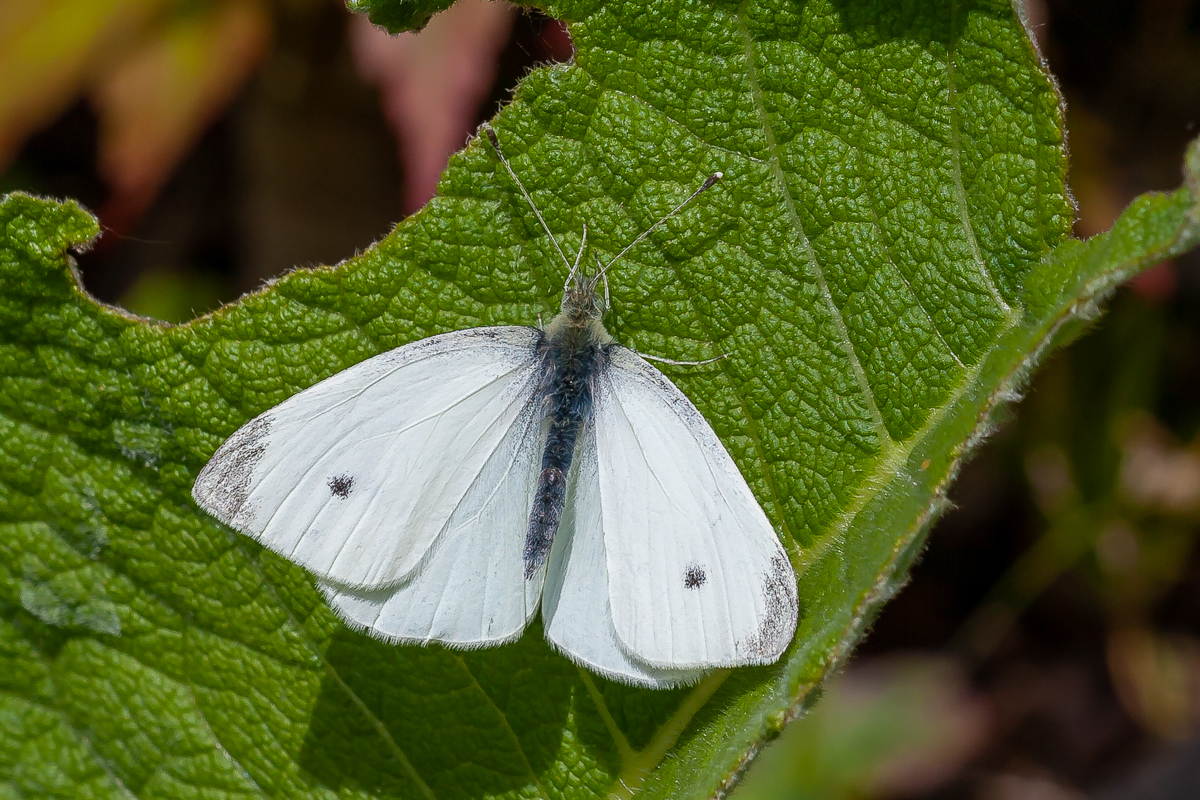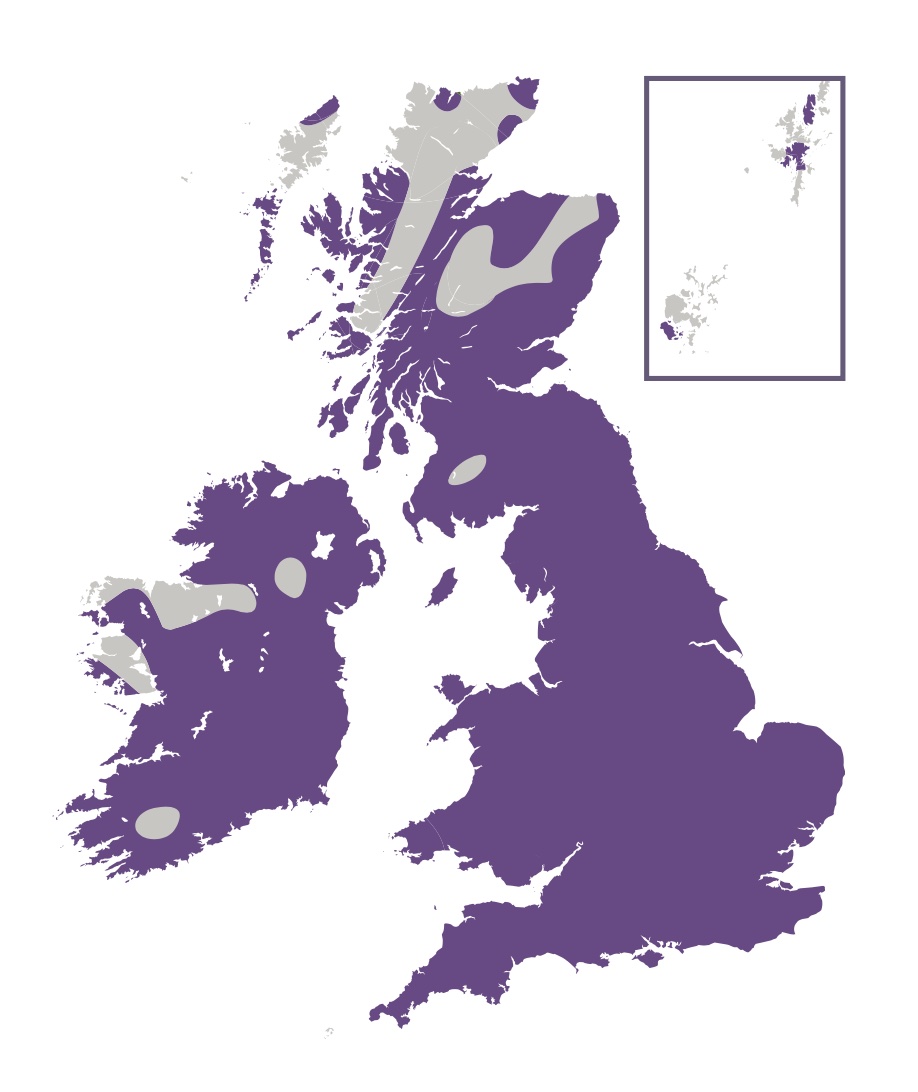
Photo © Peter Eeles
The Small White, along with the Large White, can claim the title of "Cabbage White" that is the bane of allotment holders all over the British Isles although the damage caused by this species is significantly less than that of the Large White. This is one of the most widespread species found in the British Isles and can be found almost everywhere. It is relatively scarce in northern Scotland but has been seen as far north as Orkney and Shetland. This species is also known to migrate to the British Isles from the continent, sometimes flying in great swarms, augmenting the resident population in the process.
It is believed that this butterfly can fly up to 100 miles in its lifetime although, undoubtedly, most butterflies will only travel a mile or two. Evidence of the mobility of this species comes from a misguided introduction in Melbourne in 1939. 3 years after its introduction, the species had reached the west coast of Australia some 1,850 miles away in only 25 generations. This species has been a pest in the continent ever since.
This highly-mobile butterfly can turn up almost anywhere and is a familiar sight in gardens across much of the British Isles where it is attracted to various nectar sources, in particular those with white flowers.

This species is found in a wide variety of habitats and can turn up almost anywhere, including gardens, allotments, parks, meadows, open grassland, and hedgerows.
Adults feed primarily on thistles (Carduus spp. and Cirsium spp.). Bluebell (Hyacinthoides non-scripta), Bugle (Ajuga reptans), Common Bird's-foot-trefoil (Lotus corniculatus), Common Bird's-foot-trefoil (Lotus corniculatus), Common Fleabane (Pulicaria dysenterica), Daisy (Bellis perennis), dandelions (Taraxacum spp.), Greater Stitchwort (Stellaria holostea), hawkweeds (Hieracium spp.), Hemp-agrimony (Eupatorium cannabinum), knapweeds (Centaurea spp.), Ragged-Robin (Silene flos-cuculi), ragworts (Jacobaea spp.), Red Campion (Silene dioica), Red Clover (Trifolium pratense), Sainfoin (Onobrychis viciifolia) and Wild Marjoram (Origanum vulgare) are also used.
The primary larval foodplants are Cabbage family (Brassicaceae), Sea-kale (Crambe maritima) and Wild Mignonette (Reseda lutea). Nasturtium (Tropaeolum majus) is also used.
